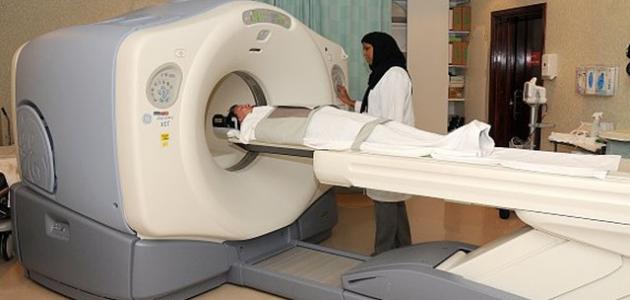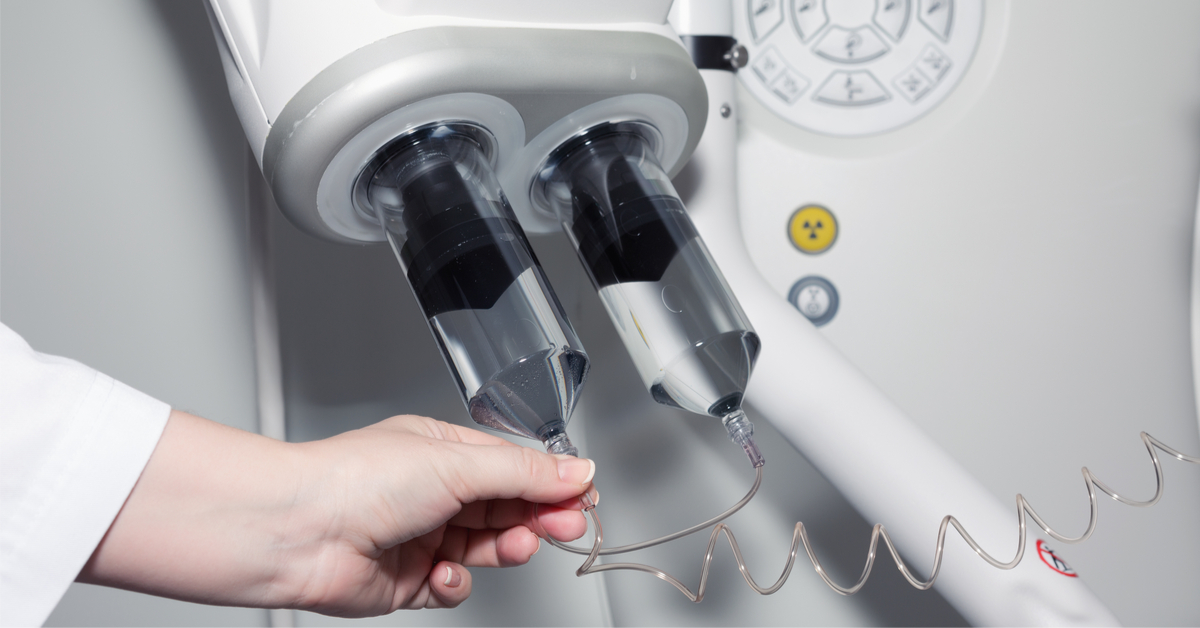When do I do x-rays of the uterus?
Hysterosalpingography procedures are among the important diagnostic procedures that are approved in the medical field, and are used to evaluate and examine the health of the uterus and adjacent tubes.
What determines when these procedures should be performed is the patient’s history, age, and medical history, as well as the recommendations of the treating physician.
The process of performing uterine dye x-rays is done by injecting a special dye into the uterine duct, using a strong, thin-headed medical catheter, which is inserted through the vagina and uterus.
These x-rays help determine the presence of any defects or narrowings in the uterus or nearby tubes, such as the presence of cavities or deformities that prevent a successful pregnancy, or show any tumors and strange collections that may be present in the uterus.
Hysterosalpingography procedures are usually associated with diagnosing infertility in women, or to evaluate the size of the uterus and its suitability for upcoming surgeries.
These procedures may also be ordered after recurrent miscarriage or to ensure there are no abnormalities or problems with the uterus or nearby tubes.
When is it recommended to perform a uterus x-ray?
Hysterosalpingography is one of the important diagnostic procedures in the field of gynecology and is used to detect possible problems in the uterus and ovaries.
These scans are often recommended when specific symptoms or medical conditions are present.
Among these common symptoms and conditions in which it is recommended to perform a uterine dye scan are: difficulty in conceiving, irregular menstruation, ongoing problems in pregnancy, or if there is even the slightest suspicion of the presence of anatomical defects in the uterus.
Dye may also be used to evaluate the success of previous surgeries or treatments for the uterus.

How to perform a uterine dye x-ray?
Performing a hysterosalpingography is one of the important medical procedures that doctors use to diagnose and treat gynecological diseases.
These x-rays color and highlight the uterus and internal tubes of the uterus using X-ray dye.
The procedure begins by preparing the patient for the examination, asking her to sign a permission form for the test.
The procedure and potential risks are then explained to the patient.
The sexual area is cleaned before and after the test with soap and water to maintain hygiene.
Before the scan, the patient is given a dye, which is injected through a thin catheter into the cervix.
The type of dye used depends on the treating physician’s recommendation and the patient’s condition.
Once the dye is injected, its spread and coloring of the uterus and inner tubes are checked in images taken using an X-ray machine.
Doctors use a computed tomography (CT) or magnetic resonance imaging (MRI) machine to get detailed, accurate pictures of the uterus and internal tubes.
Hysterosalpingography is generally considered safe and does not take a long time to perform.
However, the patient may feel some pain and tension during the examination.
It is preferable for the patient to be accompanied by another person to support her during the procedure.
After the x-rays are completed, the doctor reviews the results and communicates the diagnosis to the patient.
It may take a few days to obtain results, at which time consultation will be given regarding the next steps to treat or relieve the symptoms detected.
What are the potential risks of performing a uterine dye scan?
Hysterosalpingography procedures are common medical diagnostic procedures, but they may be associated with potential risks.
Among these risks:
- Dye sensitivity: Some people may be allergic to the components of the dye used in the procedure.
The problem of allergy is the appearance of symptoms such as skin rash, redness, itching, and difficulty breathing.
If any of these symptoms occur, the patient must inform the medical team immediately. - Complications of the intervention: Possible complications may result from the process of performing a hysterosalpingography, such as bleeding or infections.
These complications may increase if the patient has other diseases accompanying him, such as diabetes or high blood pressure. - Effect of radiation: Hysterosalpingography requires the use of X-rays.
Although the amount of radiation used in this procedure is often small and harmless, the necessary precautions should be taken to protect the patient from any possible negative effects of radiation. - Pregnancy risks: If a woman is pregnant, there may be a negative effect on the fetus as a result of the uterine dye procedure.
Therefore, the risks and benefits related to this procedure must be evaluated before performing it in case of pregnancy.

What does the doctor do based on the results of the uterus x-ray?
When the results related to the dye images of the uterus are obtained, the doctor analyzes and studies them very carefully.
The doctor aims to understand the condition of the uterus and diagnose any potential problems.
If the dye results indicate abnormalities, narrowing of the ducts, a tumor or fluid accumulation within the uterus, doctors will make a decision based on this.
The presence of abnormalities can indicate the presence of fibrosis in the uterine wall or abnormal enlargement of its size.
In this case, the doctor may have to make the decision to ignore minor symptoms or remove the entire uterus to get rid of the problem.
If the image shows narrowing of the ducts, doctors may decide to widen these ducts using a surgical procedure called canaloplasty.
This aims to improve the openings of the ducts, improve blood flow and increase the overall quality of life.
If the results of the dye indicate the presence of a tumor inside the uterus, treatment may vary depending on the type of tumor and the patient’s condition.
A decision may be made to take tumor-inhibiting medications, surgery may be organized to remove the tumor, or a decision may be made to perform a hysterectomy, a procedure in which the entire uterus is removed.
Are there specific preparations before performing a hysterosalpingography?
There are specific preparations that must be followed before performing a hysterosalpingography.
One of the most important of these preparations is fasting 4 to 6 hours before the test.
The patient must abstain from eating food and liquids during this period, in order to ensure the best image quality that doctors will receive during the test.
In addition, the doctor must be informed before performing the test of any specific medications that the patient is taking.
There may be some medications that must be stopped before taking the test, as they can interfere with the effects of the dye on the body or affect the final results.
Additionally, there may be special instructions regarding showering before the test.
The patient may be asked to avoid applying any cosmetics to the skin in the area to be examined, in order to ensure that the best possible images of the uterus are obtained during the test.

What is the price for a uterus x-ray?
A hysterosalpingography is a medical procedure used to diagnose diseases and conditions that affect the uterus and fallopian tubes.
A special medical dye is inserted into the uterus through the uterus to check for any abnormalities or blockages in the fallopian tubes.
This test is an important part of the diagnosis for some gynecological problems such as infertility.
The price of a hysterosalpingography procedure varies according to many different factors.
Among these factors are the location of the hospital or medical center where the test is performed, the cost of the materials and dye used, and any additional services provided with the test such as medical consultation and analysis of the results, which may reach 600 pounds.
Therefore, it is preferable for a person to inquire in advance about the cost of the test at the specific medical center to get accurate information about the price.
Other methods for diagnosing uterine problems without X-rays
There are several other methods that can be used to diagnose uterine problems without the need for a dye examination.
Ultrasound is one of the most common and effective methods for diagnosing uterine problems.
This method consists of using an ultrasound device to send ultrasound waves to the uterus and record the waves that return after reflecting off the uterine tissue.
Through this method, abnormalities, tumors, or stones in the uterus can be detected with high accuracy.
Hysteroscopies are also a common way to diagnose problems in the uterus.
This method involves inserting a thin, flexible tube containing a small camera into the uterus, so it is a non-surgical and painless way to detect any potential problems.
Images are displayed on a computer screen during the procedure, and doctors can effectively diagnose diseases such as uterine tumor or uterine infections.
In addition, there is also a blood test method that can be used to detect some uterine problems.
Blood tests, such as hormone levels or kidney and liver function tests, can reveal changes in the body that may indicate problems with the uterus.
By choosing one of these methods, people can obtain an accurate diagnosis of uterine problems without having to undergo a dye examination.
People should consult a specialist doctor to determine the most appropriate method for their health condition and the level of suspicion of a uterine problem.
